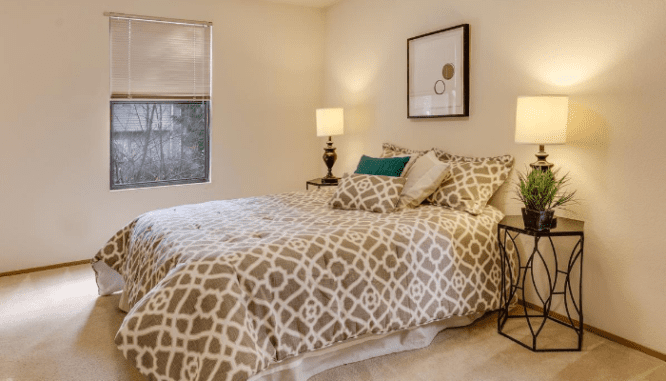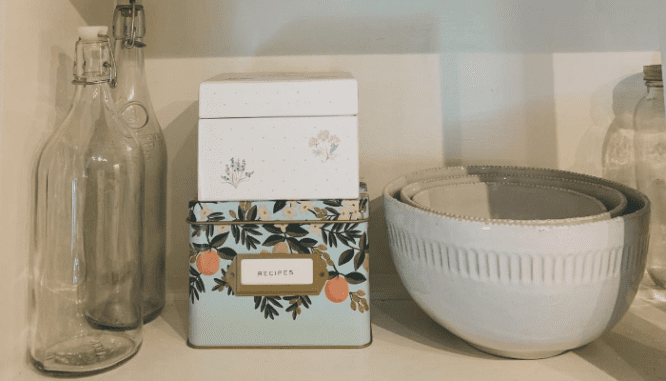Should You Take Down Pictures When Selling Your Home?
- Published on
- 4 min read
-
 Emma Diehl Contributing AuthorClose
Emma Diehl Contributing AuthorClose Emma Diehl Contributing Author
Emma Diehl Contributing AuthorEmma's work has been featured in Huffington Post, NPR and XOJane. When she's not combing her neighborhood for open houses, she's writing about technology, real estate or data.
A house becomes a home as you make it yours. Every paint color you choose; every plant you tend to; every family photo you frame, hang, and arrange with care lends the space personality. Over time, what was once four walls and a roof morphs into a living, breathing extension of you and your loved ones.
Needless to say, it can be hard to strip a home of those meaningful touches, even for the purposes of selling it. You wouldn’t be the first to ask: Should you take down pictures when selling your home? Is this truly necessary?
The resistance “usually comes down to emotional reasons,” shares Madison, Wisconsin real estate agent Jen Stauter, who’s had her fair share of experiences in her two decade-plus career working with sellers who felt guilt or sadness taking down personal items. “They might’ve had a spouse pass away and they have a special picture of them in the house.”
The process of depersonalizing a home isn’t easy, but here’s why removing personal items and photos matters, and how the simple act can help you sell your home faster. That way, you can get right into making your next residence just as special.

Why depersonalization matters
Remember how excited you were when you found this home of yours? How you could envision yourself in the breakfast nook with your cup of coffee, or how you couldn’t wait to throw a game night in the living room?
You want homebuyers to come into the space and feel that same sense of excitement, which can be hard to stoke when a house is so specifically tailored to someone else’s personal tastes and life. In this sense, depersonalization serves a few key purposes:
Remove distractions
When you keep personal photos up, it can create a mental roadblock for some potential homebuyers. Photos of faces naturally pull people in and pique curiosity — it’s human nature. And when a buyer sees personal photography in the home, they’ll be reminded that someone else lives here, distracting them from imagining their life unfolding in this house.
Stauter can’t recall how many times she’s been in homes with buyers who get distracted by family photos. Oftentimes, she says, buyers will walk up the photo and try to figure out if they knew the person. “When I ask them something about the house later, they’ll say, ‘Oh I don’t remember that,’ because all they remember is that the house might’ve belonged to someone they went to high school with,” Stauter says.
Clear clutter
Most of us don’t even realize how much stuff we have until we start going through it. When a home is staged and showing-ready, most rooms should be close to bare. The sparse items that remain should serve only to suggest the room’s purpose.
Think of it like a puzzle: How can I convey the proper use of a room with the least possible number of furnishings and decorations? In the home office, for example, all you really need is a desk, a lamp, and a chair. Everything else — the stress ball, the paperweights, the reference books — are on the chopping block.
The simple act of decluttering will pay, literally. According to HomeLight’s research, the act of decluttering can add an additional $2,500 in resale value.
It might sound strange, but the purpose of staging a home isn’t to fill it with interesting objects and photos, echoes Madison, Wisconsin agent Matt Kornstedt. He elaborates:
“You want buyers to be looking at the house versus looking at belongings. They have to be able to see themselves in this space, and if all your personal things are up, the home will be overshadowed.”
Are there any exceptions?
“In most cases, I prefer that photos be taken down,” Stauter says. However, if sellers have a well-placed gallery wall or simple frames, she recommends they cover the personalized pictures in the frames with depersonalized imagery, like black and white shots of cities, flowers, or landscapes.
“As soon as they’re done showing the home, they can just take the printed images out and take their personal frames photos to the next place,” Stauter explains.
Another exception could be any portraits or images that don’t focus on faces. That could mean an artfully shot silhouette or posed portrait where the subject is looking away. “When you look at certain photos and images, you kind of pass them by,” says Kornstedt, and that should be the ultimate goal with any imagery still left in your home.

But now my home feels bare!
A staged home shouldn’t feel vacant, so you should consider some small touches, including art, that make the space feel lived-in, yet clean.
Neutral wall art
Try your hand at a simple DIY art project to display during staging. Stick to subjects like still lifes, nature, geometric shapes, simple silhouettes of people. Paintings of people, religious iconography, or controversial subject matter is a no-go, advises home staging agency MHM Professional Staging.
If DIY is out of the question, Society6 has a full range of minimal and tasteful abstract art — some of which include digital images which can be purchased and downloaded for printing instantly.
Homey items
Staging a house to feel homey means adding little touches to make a clean and empty space feel less sterile. That could mean:
- Simple coat hooks on the wall by the front door
- A classic cookie jar in the kitchen
- A few books on the shelf of placed artfully on a side table next to a reading lamp
- A wreath on the door
- Fluffly white spa towels in the bathroom
- A vase with dried flowers in the kitchen
- A cozy throw on the couch
- Fresh soap and incense in the bathroom
- Wooden hangers in closets
In addition to the minimal staging in each room, these simple touches can make each space feel just a touch homier, without making the house feel lived-in.

Keep your photos safe and organized
You’ll want to carefully pack away and store those precious photos to keep them out of harm’s way during the move. Here are some ideas for how to do that:
- Move the picture separately from their frames.
Unless the image is professionally matted and framed, you’ll want to take the picture out of its home during the move. This will keep the photo safe in the event the frame cracks or shatters and damages the photo during transport. - Use acid-free dividers.
You might already have these acid-free clear sheet protectors lying around the house, and they’ll be perfect to store your photos in. Carefully slide an image into the protector individually. If you don’t have protectors, acid-free envelopes work in a pinch as well, as long as the image fits in them. - Keep protected photos in a shoebox.
Once you have the photos individually wrapped, you can store them lying flat in an old shoebox. Make sure you’re not overstuffing the box or cramming photos in the box that are too big or wide — this will warp and damage the photographs. - Store in a cool, dry location.
Once the photos are ready for storage, try to keep them in a cool, temperature-controlled location. Place the box high above the ground on a shelf or wire rack to prevent water damage. - Match photos to their frames for easy re-assembly.
Before removing the photos from their frames, take a picture of them with your smartphone so you can remember which photos match which frame. Additionally, place a Post-It on the back of the photo and the frame with matching numbers so they can be reunited post-move. - Play it safe and preserve old photos.
If these are the only copies you have of certain images, make sure to preserve them in the event they may be lost or damaged in the move. Costco offers affordable digitizing services, or go the DIY route with a flatbed scanner.
Family photos are so meaningful, but for a buyer, seeing them everywhere will only make them feel like they’ve intruded on someone else’s space. So substitute family portraits for abstract art (or bare wall space), and clear out rooms for simple staging. With decluttering and depersonalization, you help make your house feel like home — for someone else.
Header Image Source: (OndroM / Shutterstock)
